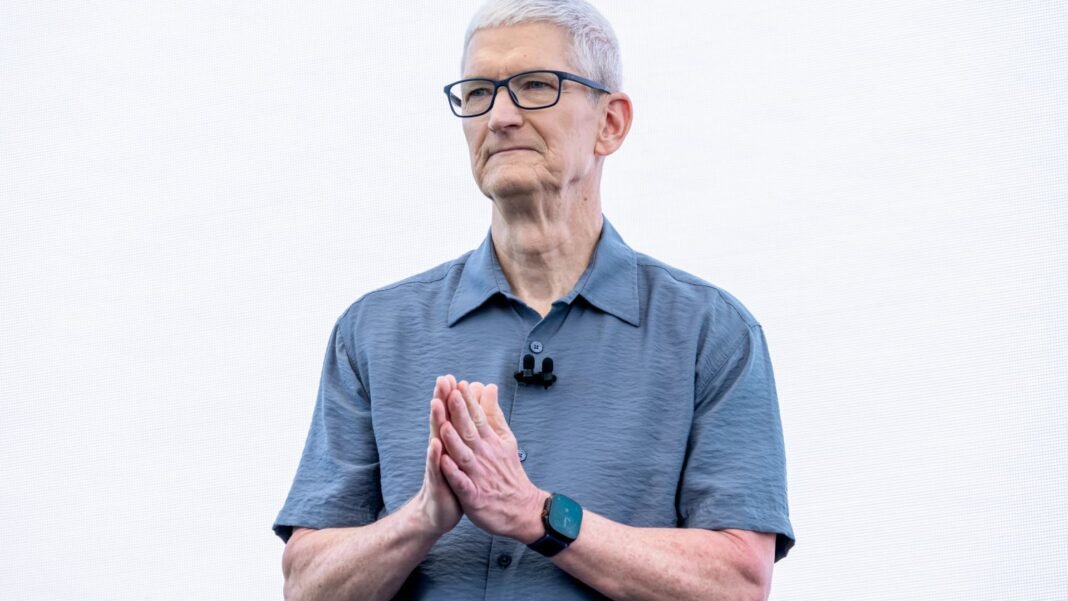Apple Introduces Liquid Glass: A Revolutionary Visual Experience Across Its Devices
during the latest Apple Worldwide Developers Conference (WWDC) at Apple park in Cupertino, California, Apple revealed a comprehensive redesign of its user interface that will soon redefine the look and feel of iPhones, MacBooks, and Vision Pro headsets. This fresh design language, named Liquid glass, represents Apple’s most notable visual transformation since the launch of iOS 7 in 2013.
A Fresh Visual Language for Apple’s Ecosystem
The update ushers in a refined aesthetic featuring translucent layers and elegantly curved edges that emulate the qualities of glass. Rather of sharp-edged rectangles dominating screens, users will experience gently rounded corners on windows and controls that glide fluidly along “glass rails.” Interactive elements like buttons have been redesigned into pill-shaped forms with smooth animations enhancing actions such as answering calls or navigating menus.
This new style draws inspiration from VisionOS-the operating system behind Apple’s Vision Pro headset-and harnesses the power of advanced Apple Silicon processors to deliver these visually immersive effects without sacrificing device performance or battery life.
AI Innovations Embedded seamlessly within Liquid Glass
Beyond its striking visuals, Liquid Glass incorporates subtle yet impactful artificial intelligence enhancements throughout Apple’s software ecosystem. Notably, integration with OpenAI’s ChatGPT now supports image recognition capabilities.For instance, when users take screenshots on their iPhones, they can instantly send them to ChatGPT for concise summaries or contextual insights-transforming static images into dynamic data sources.
A particularly groundbreaking feature is real-time language translation during phone conversations between speakers using different languages. This AI-driven function operates entirely on-device-eliminating reliance on internet connectivity-and translates spoken words instantly while responding with synthesized voices tailored to each participant’s native language. This advancement not only safeguards privacy but also fosters seamless global interaction.
Transitioning from Version Numbers to Year-Based Naming Conventions
Breaking away from its customary sequential numbering system-which reached iOS 18 last year-Apple announced it will now adopt year-based naming for its operating systems starting this fall. The upcoming release will be called iOS 26, alongside matching versions such as iPadOS 26, watchOS 26, tvOS 26, and visionOS 26.
This shift aims to simplify version identification amid an expanding lineup while reinforcing expectations for annual updates. Historically, approximately 82% of compatible devices upgrade within twelve months; this clearer naming strategy may encourage even faster adoption across Apple’s product range.
The science Behind Liquid Glass Design and Technology Integration
The concept behind Liquid Glass merges principles from contemporary material science with breakthroughs in software engineering powered by custom-designed silicon chips developed by Apple over recent years. These chips enable rendering complex clarity effects smoothly without excessive battery consumption-a challenge previous hardware generations struggled to overcome effectively until now.
An Everyday Illustration: Experiencing Transparent Interfaces Firsthand
Picture unlocking your smartphone where the lock screen resembles a polished crystal pane beneath your fingertips; buttons subtly morph shape under your touch like raindrops sliding effortlessly down a window during a gentle shower-a tactile interaction crafted not only for aesthetics but also intuitive usability that enhances daily satisfaction.
User Feedback and Market Reactions: Diverse Perspectives Emerge
The proclamation received mixed reactions among investors who had anticipated more radical AI breakthroughs comparable to aggressive advancements seen at companies like Google or OpenAI pushing frontier models forward rapidly. Following WWDC events day trading saw Apple’s stock dip roughly 1.2%, reflecting cautious sentiment about incremental AI improvements rather than revolutionary leaps forward.
“The newly introduced AI features seem evolutionary rather than revolutionary compared with existing competitor offerings,” remarked industry analysts assessing market impact post-event.
Siri’s much-anticipated upgrade remains postponed; initially previewed last year under “Apple Intelligence” promising smarter email parsing and proactive assistance features-it has yet to meet Apple’s rigorous quality benchmarks according to statements made during WWDC presentations.
A Glimpse Into What Lies Ahead: Upcoming Features Expected Next Year
- Broad availability: Beta testing starts this summer ahead of general release expected around september alongside other OS updates named after their respective years (2026).
- Smoother animations: Interface transitions become more lifelike reflecting physical phenomena such as light bending through glass surfaces;
- Tighter hardware-software synergy: Enhanced utilization of apple Silicon accelerates graphics rendering ensuring fluid performance despite richer visual demands;
- User-centric AI processing: On-device machine learning prioritizes privacy while delivering complex functionalities previously dependent on cloud services;
The Strategic Significance Behind This Transformation
This extensive redesign underscores Apple’s dedication not only toward elevating aesthetics but also creating unified experiences spanning multiple devices-from handheld gadgets through augmented reality wearables-all tied together by one cohesive visual identity supported by cutting-edge technological progress.
As competition intensifies globally around artificial intelligence-with tech giants investing billions annually into generative models-Apple appears committed to measured innovation emphasizing quality assurance over rapid deployment.
The coming months will reveal how consumers respond amid evolving expectations shaped by rival innovations across Silicon Valley ecosystems worldwide.






